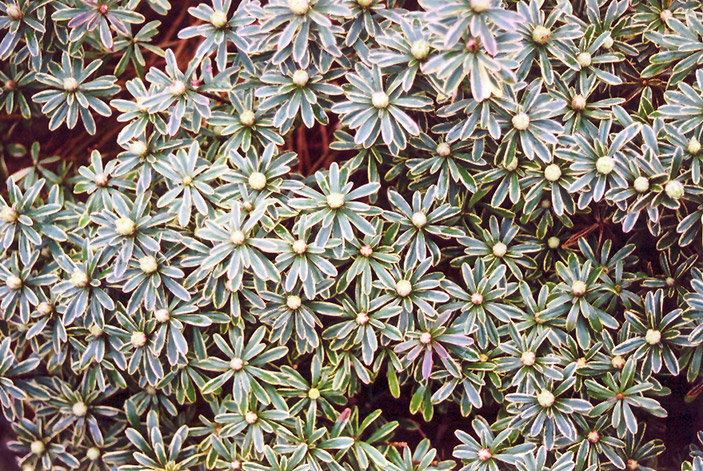Variegated Rose Daphne
Daphne cneorum 'Variegata'
Height: 24 inches
Spread: 24 inches
Sunlight:
![]()
![]()
Hardiness Zone: 4
Other Names: Garland Flower
Description:
A stunning garden accent shrub with intoxicatingly fragrant pink flowers held over creamy white-edged foliage in spring; a fussy plant, needing light shade and well-drained soil; never move once established
Ornamental Features
Variegated Rose Daphne has fragrant pink tubular flowers along the branches in mid spring, which emerge from distinctive red flower buds. It has attractive white-variegated dark green foliage. The narrow leaves are highly ornamental and remain dark green throughout the winter.
Landscape Attributes
Variegated Rose Daphne is a multi-stemmed evergreen shrub with a ground-hugging habit of growth. Its relatively fine texture sets it apart from other landscape plants with less refined foliage.
This shrub will require occasional maintenance and upkeep, and should never be pruned except to remove any dieback, as it tends not to take pruning well. Gardeners should be aware of the following characteristic(s) that may warrant special consideration;
- Disease
Variegated Rose Daphne is recommended for the following landscape applications;
- General Garden Use
- Groundcover
Planting & Growing
Variegated Rose Daphne will grow to be about 24 inches tall at maturity, with a spread of 24 inches. It tends to fill out right to the ground and therefore doesn't necessarily require facer plants in front. It grows at a slow rate, and under ideal conditions can be expected to live for approximately 20 years.
This shrub does best in full sun to partial shade. It prefers dry to average moisture levels with very well-drained soil, and will often die in standing water. It is not particular as to soil pH, but grows best in clay soils. It is somewhat tolerant of urban pollution, and will benefit from being planted in a relatively sheltered location. Consider applying a thick mulch around the root zone in winter to protect it in exposed locations or colder microclimates. This is a selected variety of a species not originally from North America, and parts of it are known to be toxic to humans and animals, so care should be exercised in planting it around children and pets.

